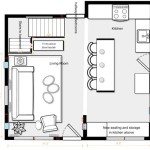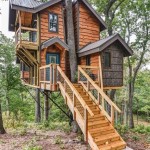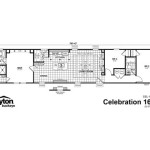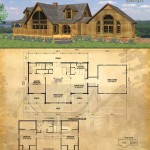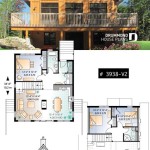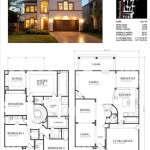House Plans with Detached Garages & Breezeways
Detached garages offer homeowners a variety of benefits, from increased flexibility in home design to enhanced fire safety. Coupling a detached garage with the main house via a breezeway creates a sheltered connection, blending the convenience of an attached garage with the aesthetic and practical advantages of a detached structure. This article explores the appeal of house plans featuring detached garages and breezeways, examining the advantages, design considerations, and various styles available.
One of the primary benefits of a detached garage is design flexibility. It allows for greater freedom in positioning the garage on the property, accommodating challenging lot shapes or maximizing curb appeal. A detached garage can be situated to complement the main house's architecture without compromising its design integrity. This separation also opens opportunities for creating unique outdoor living spaces between the structures, such as courtyards or gardens.
Enhanced fire safety is another significant advantage. The physical separation between the house and garage reduces the risk of fire spreading from one structure to the other. This separation can be especially important for garages used as workshops or storage areas for flammable materials. Building codes often stipulate specific fire-resistant materials and construction methods for attached garages, which can add to construction costs. Detached garages may offer more lenient requirements in this regard.
Breezeways serve as a vital link between the house and detached garage, providing a covered walkway that protects against inclement weather. This sheltered connection offers convenience, especially in areas with frequent rain or snow. Beyond their practical function, breezeways can enhance the aesthetic appeal of the property, creating a visually appealing transition between the structures and adding architectural interest.
Several design considerations are crucial when planning a house with a detached garage and breezeway. The size and style of the garage should be proportionate to the house and the lot. Consider the number of vehicles to be housed, as well as any additional storage or workshop space required. The breezeway's design should complement the architectural style of both the house and garage, creating a cohesive and harmonious look.
The placement of the breezeway is another key consideration. It can be designed as a straight walkway, an L-shape, or even a U-shape, depending on the layout of the property and the desired flow between the structures. The materials used for the breezeway should be durable and weather-resistant, complementing the materials used for the house and garage.
Various architectural styles lend themselves well to detached garages and breezeways. For traditional homes, a detached garage with a matching architectural style and a breezeway with classic columns and detailing can enhance the overall charm and character of the property. Modern homes can benefit from a detached garage with a sleek, minimalist design and a breezeway featuring clean lines and contemporary materials.
For homes in rural settings, a detached garage with a rustic aesthetic and a breezeway constructed from natural materials like wood or stone can create a seamless connection with the surrounding landscape. Coastal homes can incorporate a detached garage with a beach-inspired design and a breezeway featuring open railings and airy materials to capture the essence of seaside living.
The size and configuration of the breezeway can also be customized to suit individual needs and preferences. A small, simple breezeway may be sufficient for providing basic weather protection, while a larger breezeway can be designed as an extension of the living space, incorporating seating areas, storage, or even an outdoor kitchen.
Incorporating landscaping around the detached garage and breezeway can further enhance the visual appeal of the property. Planting trees, shrubs, and flowers can soften the hardscape elements and create a welcoming transition between the structures. Consider using lighting to highlight the architectural features of the garage and breezeway and enhance the safety and security of the area.
Proper ventilation is an important factor to consider, especially if the garage is attached to the house via a breezeway. Adequate ventilation helps prevent the buildup of fumes and odors from vehicles and other stored items. Ensure that the garage and breezeway are properly ventilated to maintain a healthy and comfortable environment.
Consulting with an architect or a building designer is essential when planning a house with a detached garage and breezeway. They can help develop a design that meets specific needs and preferences, while also adhering to local building codes and regulations. They can also provide valuable insights into material selection, construction techniques, and cost considerations.
Ultimately, the decision to incorporate a detached garage and breezeway into a house plan depends on individual needs, preferences, and the characteristics of the property. Careful planning and consideration of the various design elements can result in a functional and aesthetically pleasing addition that enhances both the value and enjoyment of the home.

Quintessential American Farmhouse With Detached Garage And Breezeway 500018vv Architectural Designs House Plans

Plan 500018vv Quintessential American Farmhouse With Detached Garage And Breezeway House Plans

13 Stunning Detached Garage With Breezeway To Wow Your Neighbors Kellyhogan

Bungalow With Breezeway House Plans The Red Cottage

Detached Garage House Plans Floor French Country

13 Stunning Detached Garage With Breezeway To Wow Your Neighbors Kellyhogan

Exclusive Southern Home Plan With Detached 3 Car Garage 130038lls Architectural Designs House Plans

Detached Garage With Breezeway House Plans Craftsman Style Home

Beautiful Cottage Style House Plan 7055 2024 Idea

New Popular House Plans With Detached Garages Dfd

